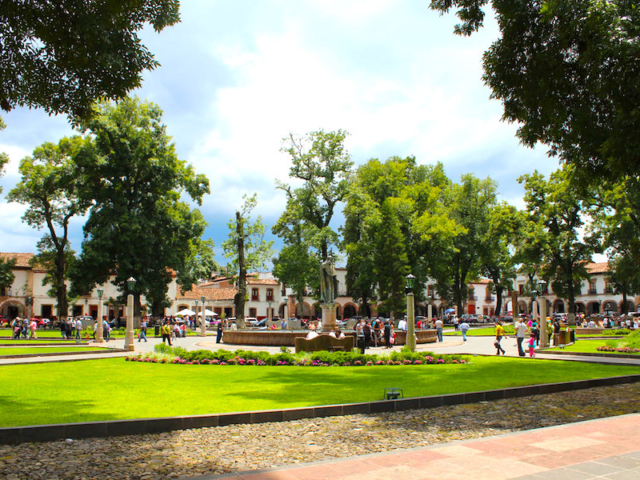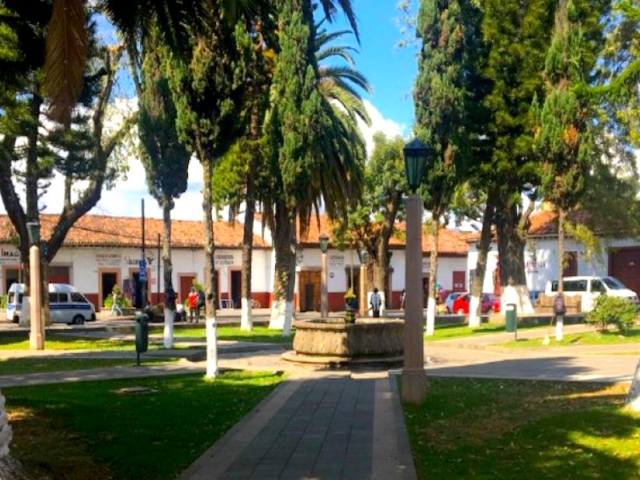Ubicación: Pátzcuaro
In pre-Hispanic times, as a religious capital, it was the most important ceremonial center of the Purhépecha.
Upon his arrival, Don Vasco de Quiroga, moved the Bishopric of Tzintzuntzan to Pátzcuaro, making it the capital of Michoacán (1539 – 1580).
It is one of the most beautiful typical towns in America, its magnificent adobe and tile constructions and its monumental temples, and its spectacular Plaza Vasco de Quiroga make it one of the main tourist centers of the Mexican Republic.
The surroundings of Lake Pátzcuaro and its Islands are inhabited by the indigenous community that preserves a large part of its customs and traditions.
Its fishermen are known worldwide for the butterfly-shaped nets they use to catch the delicious white fish that is now in danger of extinction.
The Calvary chapel was built at the devotion and expense of Fray Marcos Ramírez de Prado, Bishop of Michoacán, and was completed in 1666, as indicated by the inscription placed then on the tower cube. Data from the book “History of Pátzcuaro” by Manuel Tousaint, states that according to…
Ver másOn the huge esplanade that constitutes the plaza in which the aforementioned church is located, an attractive garden has been arranged, independent of the temple's own atrium, which, due to its location on the hill, allows you to enjoy a memorable view of the city and Lake Pátzcuaro framed…
Ver másIt is one of the largest colonial squares in America and is surrounded by portals and beautiful colonial houses. As a curious thing in the squares of that time - only here - there is no temple in its surroundings, but private houses and buildings enclose its…
Ver másOn the opposite corner of the old Franciscan convent is this small square, which is one of the most beautiful in Pátzcuaro. In the center there is a fountain with a round rim as decoration. On one side, facing the wall of the convent of San Francisco, is the portal…
Ver másIt is located next to the aforementioned temple. At one time it was famous and appreciated for the beauty and careful care of its gardens and its central fountain, however now it is sadly hidden and occupied by market stalls. But it still exists and we hope that one day...
Ver másIt is the second most important square after the Plaza Vasco de Quiroga, which is a little smaller than the latter. Its current name, Gertrudis Bocanegra, was given to it in honour of this insurgent heroine. A large bronze statue that is meant to represent her stands in its centre. María Gertrudis Bocanegra Mendoza…
Ver más





